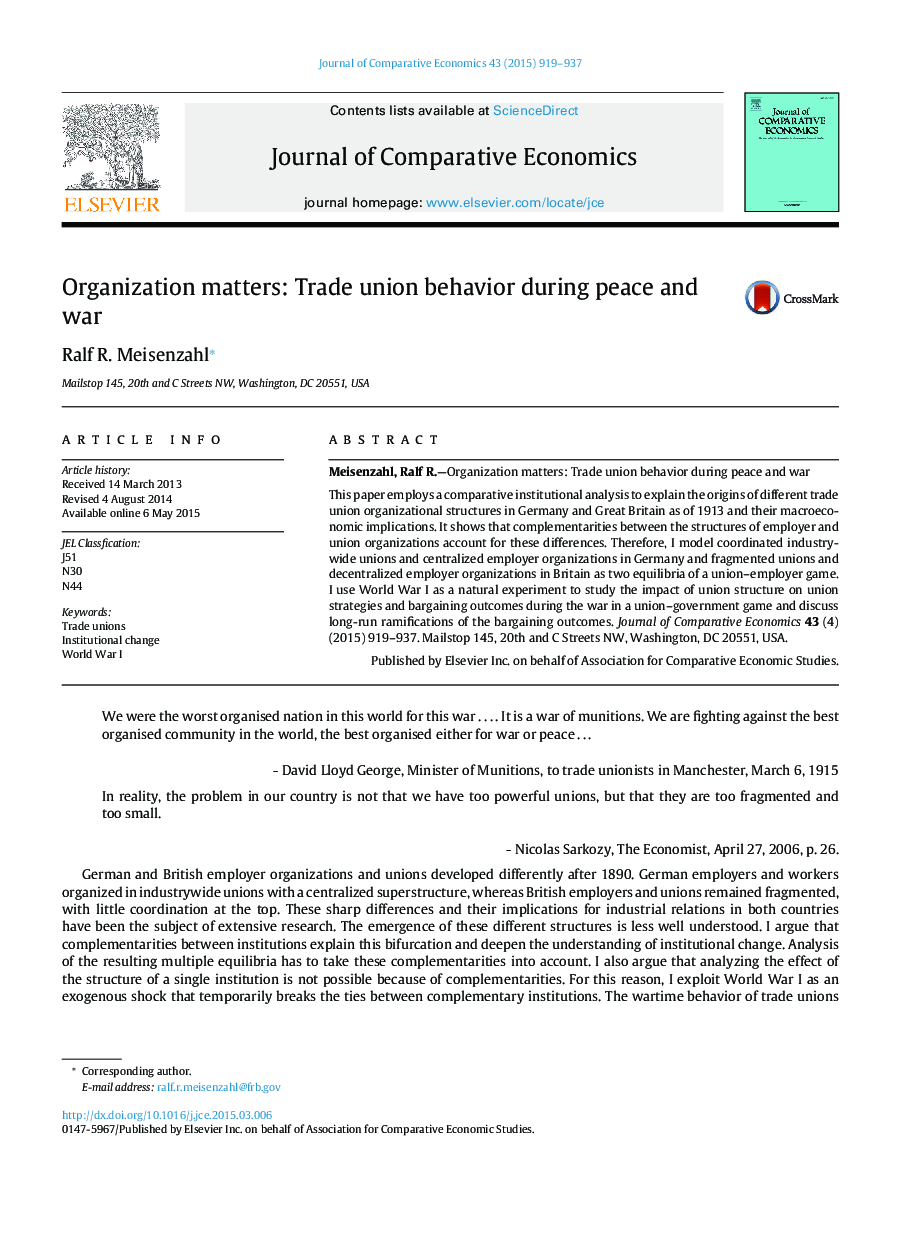| Article ID | Journal | Published Year | Pages | File Type |
|---|---|---|---|---|
| 5092124 | Journal of Comparative Economics | 2015 | 19 Pages |
Abstract
This paper employs a comparative institutional analysis to explain the origins of different trade union organizational structures in Germany and Great Britain as of 1913 and their macroeconomic implications. It shows that complementarities between the structures of employer and union organizations account for these differences. Therefore, I model coordinated industrywide unions and centralized employer organizations in Germany and fragmented unions and decentralized employer organizations in Britain as two equilibria of a union-employer game. I use World War I as a natural experiment to study the impact of union structure on union strategies and bargaining outcomes during the war in a union-government game and discuss long-run ramifications of the bargaining outcomes.
Related Topics
Social Sciences and Humanities
Economics, Econometrics and Finance
Economics and Econometrics
Authors
Ralf R. Meisenzahl,
